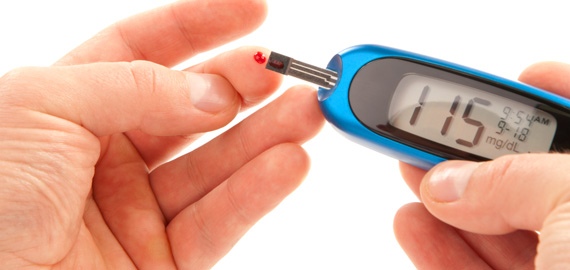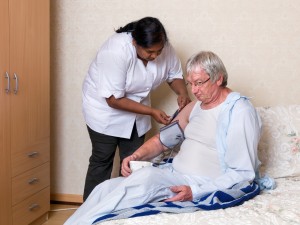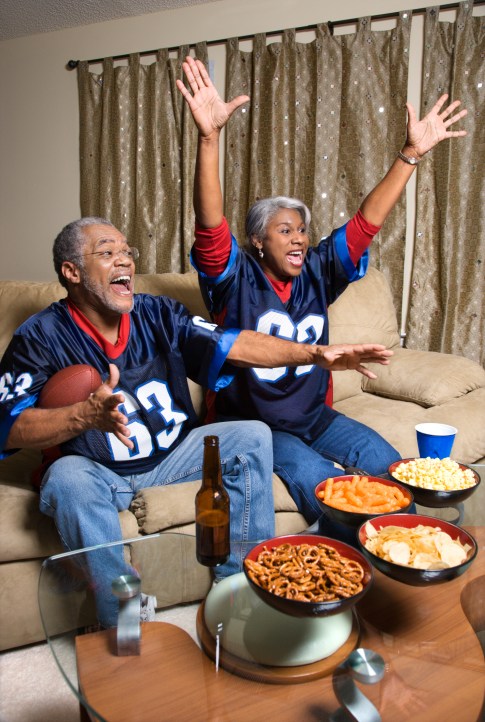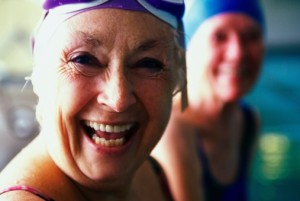From 274 Pounds To UltraMarathoner Without Injury
At age 46, Bluemont, Virginia's Susan Jennings weighed a health-threatening 274 pounds and "to be able to walk a mile or two" was considered a worthy goal. Less than two years later, in 2009, and 135 pounds lighter, Susan set a goal to run the Icy 8-Hour Adventure Trail Run -- in which she successfully completed 31.5 miles in a little over seven hours (no time to complete another loop of the circular course).
In her first ten months of running ultras (races longer than a 26.2-mile marathon) and less than two-and-a-half years removed from weighing dangerously close to 300 pounds, Susan ran an astounding six ultra-marathons, the one mentioned previously, plus:
* A 50K (31 miles)
* Two 50-mile trail races (and the Marine Corps Marathon) in one 6-week period
* 49 miles in a 10-hour event (in which Susan was the second place female)
* And 64 miles in a 24-hour race
How did Susan transform herself so quickly and completely without seriously injuring herself or worse? Most important, she started slowly. While transforming her diet, her initial exercise sessions were 30-minute walks. Gradually, over time, these walks escalated into two-hour hikes on the Appalachian Trail near her home. Susan didn't start adding small segments of running to her walks/hikes until she had lost about 75 pounds and could include the running comfortably and safely. As the hill-filled hikes strengthened her legs and she got fitter, she walked less and ran more until she was easily running miles at a time.
Many will ask, "Isn't all that running hard on the joints, bad for the knees?" The answer is that the knees and other joints were made to be used, were created for walking AND RUNNING, and that sitting for long periods of time is actually a lot harder on them. When there is a proper balance between use and rest, the joints have the ability to regenerate and repair themselves. Susan sees that her body gets the recuperative rest it needs in the form of time off after long, exhausting races and extra-hard training sessions. Further, since Susan's joints and muscles were strong enough to support 274 pounds, it was relatively easy for them to take on the force/pounding of running when she was so much lighter. Someone who gains weight and then takes up jogging has the problem of muscles, ligaments, tendons and joints not being used to supporting the extra weight, in which case the added stress or pounding of running makes them more prone to injury.
Beyond the aforementioned reasons why Susan can handle all the ultra-long races and training runs she's put her body through (one night recently she ran 38 miles on a treadmill), here are her "secrets" to staying up-and-running:
* Strength Training -- Past age 40 we lose muscle mass and strength unless we strength-train to negate this natural trend. Also, when we lose weight, it is normal to lose some muscle along with the unwanted adipose tissue. Susan counteracts these two situations by strength training two or three times a week.
* Flexibility/Balance Training -- With aging there is usually a loss of flexibility and balance, increasing the risk of falls and other injuries when running. To lessen this trend, Susan includes a yoga-type program called Praise Moves in her training.
* Varied Training Terrain/Effort -- To lessen the jarring impact of running, Susan runs mostly on softer surfaces, such as trails, avoiding asphalt as much as possible. Running up and down hills and on uneven natural surfaces varies the muscles used and the angle of the foot-strikes; this helps her avoid the repetitive-use, stress injuries more associated with running on flat/even surfaces such as paved roads and running tracks. Alternating hard-run days with easier or shorter ones and changing speeds also helps.
* Chi and Pose Running Methods -- Susan practices the body alignment and techniques of these two methods of running created to reduce injuries and make running easier. Ideally with these two styles of running, one is pulled along relatively effortlessly by gravity rather than pushing oneself forward with excessive physical force and exertion.
* Focus on Proper Form and Relaxation -- Susan uses self-talk to keep her attention on maintaining good/efficient form and staying relaxed by saying things such as, "Relax your shoulders, keep your limbs loose, run from your core ..." Improper form and the tensed muscles of runners trying too hard sets them up for inefficient running and eventually misuse injuries.
* Eat for Success -- Susan has found that when she eats right she sleeps better (lack of sleep and poor sleep results in being tired, which can lead to injuries), runs better and feels better overall. Although she doesn't always make the better choice, Susan knows that she has to decide, each time she's tempted, whether to give in to the immediate gratification and stress relief of comfort foods or have the long-term effects of a healthy and whole body. Along with a good diet, she relies on targeted nutritional supplements to deal with the free-radical damage and added stress of running long. These include omega-3 oils, vitamin D3 (in which most people are deficient), vitamin C ...
* A Positive Mental Attitude -- When we are mired in a negative mental state we are more prone to accidents, such as not noticing and then tripping over a rock or root in our path. With a positive mindset we are more alert to the possible hazards and thus better able to negotiate them. Susan has found that focusing on how tired and uncomfortable one is during a race can lead to dragging the feet and tripping, while focusing on the goal or on getting to the next aid station is more empowering.
Besides the above major means of staving off injuries, there are some others Susan uses. One is to change shoes often. As soon as Susan starts to feel unfamiliar twinges, she knows it's time to change shoes (better to spend a few dollars on a new pair of shoes than on multiple doctors' visits and physical therapy). Another is to do some rebounding on a mini-tramp after a long run, followed by a self-massage of the legs to release lactic-acid build up. Finally, Susan spends a few bucks on an occasional massage to relieve muscle tightness and minor aches and pains.
We may not want to join Susan on a 50-mile run; we can opt for much shorter jaunts. Many older folks, however, don't take up and enjoy youth-enhancing runs, bike rides, swims, hikes, tennis outings ... because they are afraid they'll get hurt. The truth is: Although we are more likely to get injured during physical activities like these, we are much more likely 24/7 to suffer serious injuries if we don't get up and off the couch very often. If we follow some of Susan Jennings "secrets" for staying up and running, we WILL have a much better quality of life -- more fun -- in the years and decades sure to come -- AND we'll be injury free!
-
The Importance Of Water For A Healthy Lifestyle
It is well known the fact that without water we die. Unfortunately,
-
Mediterranean Diet: Why You Should Make Extra Virgin Olive Oil Part Of Your Diet
The abundant use of olives and extra virgin olive oil truly defines
-
Weight Loss Surgery: Part Of Makeover Culture
Is weight loss surgery the new cosmetic surgery? Is it now a personal
-
Breakthrough Vision Discovery: MAX-Z-LUTEIN
Some of it is available from food, but chances are you aren’t g
-
New Years Resolutions 4 Steps To Success
For many of us who want to start living a healthier lifestyle, the har
-
Weight loss ?fast and lasting
The scientists are in agreement. It抯 eas
- DON'T MISS
- International No Diet Day 2016
- Why Knowing Your Body Mass Index Number Is Crucial To Your Diet
- Weight Loss Tips For Teens And Young Adults
- Feel Your Way to Weight Loss
- 3 Signs Youre Stuck In Old Behavior Patterns + How To Break The Cycle
- Weight-loss Plan – The best way to avoid the unwanted side effects of having a quick weight reduction diet
- Cost Of Lap Band Surgery - Is Financing Available?
- Five Common Foods That Are Ruining Your Waistline
- Is weight-loss hypnosis effective?
- Home Weight Loss Naturally




